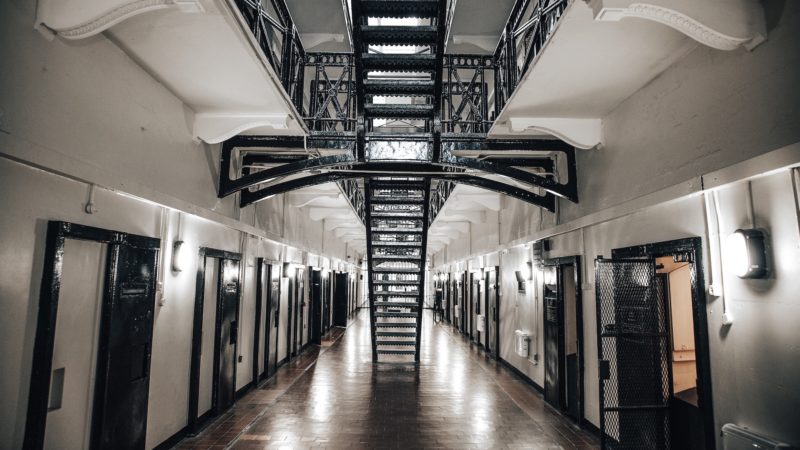
Labour has published its own green paper – a rare move from an opposition – with new measures to tackle violence and other crimes against women. The proposals include new offences such as prohibiting street harassment, making a misogyny a hate crime and banning ‘sex for rent’. In the aftermath of the murder of Sarah Everard, and the renewed focus on the endemic violence facing women and girls, it is Labour offering serious and substantial reforms to the criminal justice system in this area.
But it was another consequence of violence against women that emerged from Scotland this week. Research by Glasgow University found that four in five female prisoners had a history of significant head injury. The headline was disturbing, but the causes of such trauma revealed the extent and consequence of male violence towards this small but vulnerable group of women. 89% of the prisoners surveyed cited domestic violence as the cause of their head traumas.
The prevalence of victims of domestic abuse in our prisons might not be a surprise. Across England and Wales, well over half of female prisoners are victims of domestic abuse (though charity groups believe this to be a drastic underestimate as women fear disclosing abuse when in prison). A similar proportion of the female prison population have experienced emotional, physical or sexual abuse as a child, compared to just a quarter of the male equivalent.
The physical effect of historic domestic violence can be forgotten. The research suggested that 66% reported head injuries suffered over many years and 40% had a diagnosed disability as a result. A Professor of Clinical Neuropsychology, Tom McMillan, cited common effects of such significant head injuries as the impairment of information processing and impulsivity – all factors associated with increasing the risk of reoffending.
Simply put, if you sat down and had a conversation with a female inmate in our prisons, it is likely that she was abused as a child and/or is a victim of domestic violence at the hands of a man and suffered significant head injuries as a result. She is incredibly likely to have depression and other mental health problems, and alcohol and substance addictions. She may have children, from whom she has been separated due to her custodial sentence. This is likely to compound her vulnerability, especially if they have been taken into care.
The complex needs of women in our prisons is perhaps best evidenced by the scale of self-harm – last year there were 3,557 incidents of self-harm for every 1,000 female inmates, compared to 595 for every 1,000 of their male counterparts. Where do we begin to change these tragic circumstances? There are an array of reforms required across our society, economy and culture to confront these issues, from healthcare, to education, to housing and the benefit system. But a good place to start might be our criminal justice system.
It is clear, from the statistics above, that a female offender is likely to be a different proposition for probation services and the sentencing judge, and the law, should do better to take that into account. Two-thirds of women in prison are mothers. There should be a presumption against a custodial sentence if sentencing a pregnant person or a primary carer of a child. Without exceptional reasons, a non-violent offender who is the primary carer of a child or pregnant, should not go to prison. It surprises many that an estimated 600 pregnant women enter prisons each year and 100 babies are born inside.
It does not take a maths genius to work out that many of the 600 pregnant women entering prisons often do not stay there for long. This is the other underlying feature for women in prisons – short-term sentencing disproportionately affects women. As shadow prisons minister Lyn Brown has written, more than half of women convicted in 2019 were for low-level offences (such as shop lifting). The government’s own Female Offender Strategy in 2018 stated that “there is persuasive evidence that short custodial sentences are less effective in reducing reoffending than community orders”. Yet nothing has been done and reoffending rates remain stubbornly high.
Creative community orders would lead to far better outcomes for these prisoners. The government recently announced that it is going to spend £150m on 500 new prison places for female offenders. Imagine if that money, instead of building a new cell for a woman to spend a few months in, were invested in restorative justice schemes in the community, training or education and drug and alcohol rehabilitation schemes.
More generally, this vulnerable group, pre and post any offence, need protection. If you leave a violent relationship for a short custodial sentence having shop lifted to pay for your abusive husband’s drug habit, where are you meant to go upon release? There has been a 25% cut to funding for local authority spending on domestic abuse refuges since 2010. It is no surprise, therefore, that 60% of female prisoners released this year have been homeless. As a 40-year-old female prisoner said: “I was released with no money and just an HMP bag. That was it. I had nothing to go back to. After that, I ended up working on the streets as a prostitute.”
The way we treat female prisoners is a disgrace. Often, a macabre fascination with high-profile female murderers or accomplices dominates the analysis. Cultural caricatures of ‘macho’ women behind bars has developed into something of a stereotype that could not be further from the truth. In fact, often a woman in prison should be treated as much as a victim than as an offender.




More from LabourList
Letters to the Editor – week ending 14 December 2025
‘Like changes to winter fuel allowance, lifting the two-child cap may be easy in Parliament — and risky everywhere else’
‘No racist is going to make me feel I don’t belong’: Shabana Mahmood on resilience, faith and public service